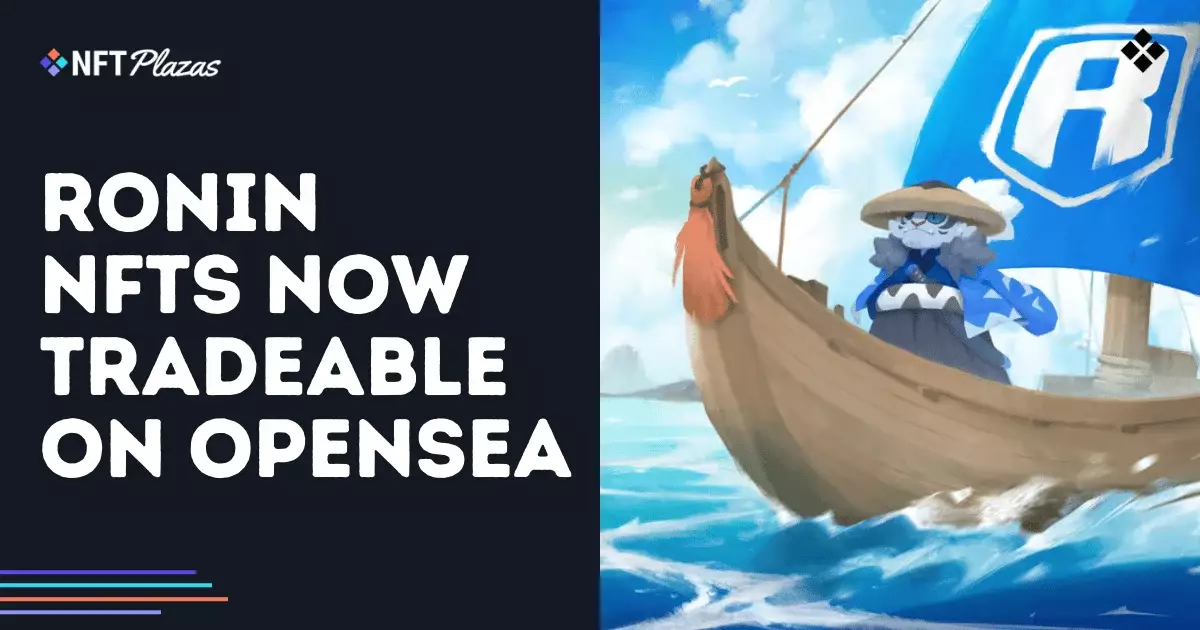The NFT landscape has undergone significant transformation with the recent integration of the Ronin blockchain into OpenSea, one of the largest NFT marketplaces globally. For enthusiasts and creators alike, this partnership isn’t merely a technical enhancement; it represents a cultural shift within the NFT community. Until this point, users were shackled to the Ronin Market, a relatively niche platform with limited visibility. However, by joining forces with OpenSea, Ronin has opened up a broader arena for transactions, fostering competition and potentially amplifying the value of NFT assets. Such evolution in digital asset trading is more than an upgrade; it is a revolutionary step toward democratizing access to NFT marketplaces.
Empowering Creators: The No-Code Revolution
Sky Mavis, the force behind the Ronin blockchain, has also introduced OpenSea Studio—a no-code platform designed for NFT creation. This innovation could be a game-changer, particularly for less technically savvy artists who find themselves deterred by the complexities of traditional NFT minting processes. The idea that anyone, irrespective of their coding knowledge, can launch their digital art as an NFT could lead to an explosion of creativity, anchoring the Ronin ecosystem in a rich tapestry of diverse offerings. In an era where gatekeeping can stifle innovation, this move is visionary and sets a precedent within the industry.
Commemorative NFTs: A Nostalgic Touch
To celebrate this dynamic partnership, Sky Mavis has rolled out a pair of commemorative NFTs—Jin and Ronke. These tokens are a clever nod to the community that has nurtured Ronin since its inception. By providing unique tokens free of charge, the creators not only give back but also stimulate interest in the new trading capabilities, thus ensuring that users have a stake through these nostalgic mementos. However, one could argue that while such initiatives stimulate initial engagement, they risk becoming mere sentimentality in an increasingly transaction-driven market. The emotional connection to their work is vital, but it must also yield tangible benefits for creators in a fiercely competitive landscape.
Revenue Streams and Sustainability: A Double-Edged Sword
The integration also raises compelling questions about sustainability and revenue distribution. OpenSea’s provision of an 8% fee on Ronin-based transactions funneling into the Ronin Treasury ostensibly supports the network’s operations. However, one can’t help but wonder if this arrangement conceals potential pitfalls. While it generates income, it simultaneously shifts focus towards profitability rather than pure community engagement. As we push deeper into the age of digital economies, the question remains: will we see an even deeper entrenchment of capitalism, overshadowing the original ethos of community-driven projects?
Royalty Enforcement: Navigating the Minefield
Another significant aspect of the Ronin and OpenSea integration is the approach to royalty enforcement. Newer token standards like ERC-721C and ERC-1155C will enjoy enforceable royalties, while older standards face ambiguity and inconsistency. This nuanced differentiation could create ripples of confusion among creators working across different standards. The commitment to addressing these discrepancies, as stated by Sky Mavis, is essential for aligning practices across platforms. Yet, as with many evolving technologies, the real challenges lie in execution. The need for clarity and fair enforcement cannot be overstated in a domain that thrives on trust and integrity.

